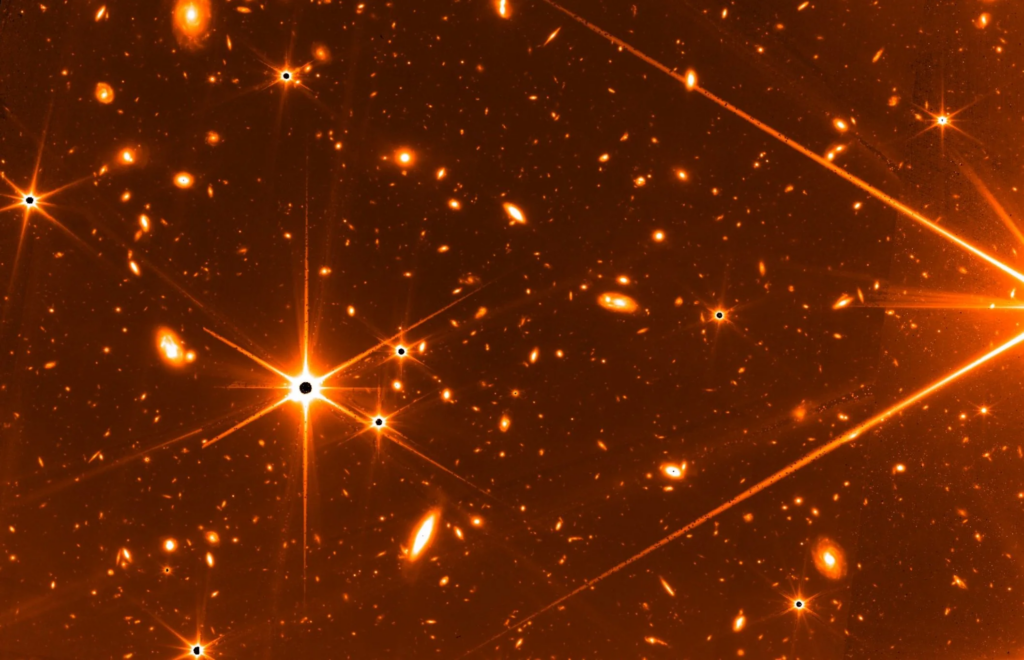On Tuesday, the James Webb Space Telescope began releasing a new wave of cosmic photos, ushering in a new era of astronomy.

“Every image is a new discovery,” NASA Administrator Bill Nelson stated. “Each will give humanity a view of the universe that we’ve never seen before.”
Webb presented the finest image of the early cosmos, dating back 13 billion years, on Monday.
On Tuesday, a new picture revealed water vapor in the atmosphere of a distant gas planet. The spectroscopy of planet WASP-96 b, found in 2014, revealed extensive information through light analysis.
WASP-96 b, located about 1,150 light-years away, has half the mass of Jupiter and orbits its star in 3.4 days.
“We’ve seen the effect of what happens when a planet and its atmosphere passes in front of the star, and the star light filters through the atmosphere, and you can break that down into wavelengths of light,” Knicole Colon said.
“So you’re actually seeing bumps and wiggles that indicate the presence of water vapor in the atmosphere of the planet.”
The Carina Nebula, a star nursery known for its towering pillars, will also be revealed, as will “Mystic Mountain,” a three-light-year-tall cosmic pinnacle caught in a classic Hubble photograph.
The White House unveiled a magnificent image on Monday that was bursting with hundreds of galaxies and featured some of the weakest objects ever spotted.
Webb’s First Deep Field depicts the galaxy cluster SMACS 0723, which functions as a gravitational lens, bending light from more distant galaxies behind it towards the observatory, resulting in a cosmic magnification effect.
The Webbspacecraft, which was launched from French Guiana on an Ariane 5 rocket in December 2021, is circling the Sun at a million miles (1.6 million kilometers) from Earth in a region of space known as the second Lagrange point.
Here, it maintains a constant position relative to the Earth and Sun, using just a small amount of fuel for course corrections.
The entire project cost is projected at $10 billion, making it one of the most costly scientific platforms ever built, similar to CERN’s Large Hadron Collider.
Following the initial photographs, astronomers from all over the world will compete for time on the telescope, with projects chosen competitively through a procedure in which applicants and selectors do not know each other’s identities in order to reduce prejudice.
NASA thinks Webb has enough fuel for a 20-year life as it collaborates with the Hubble and Spitzer space observatories to solve basic questions about the universe.







